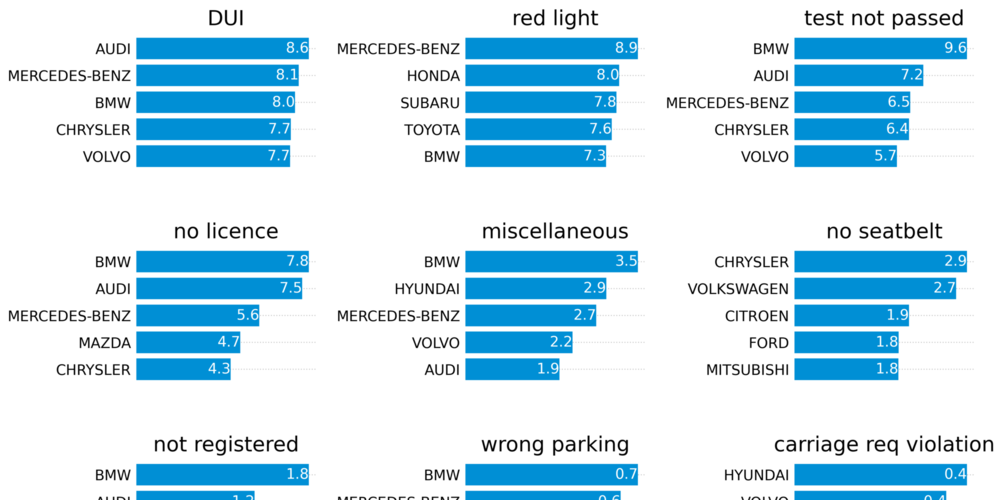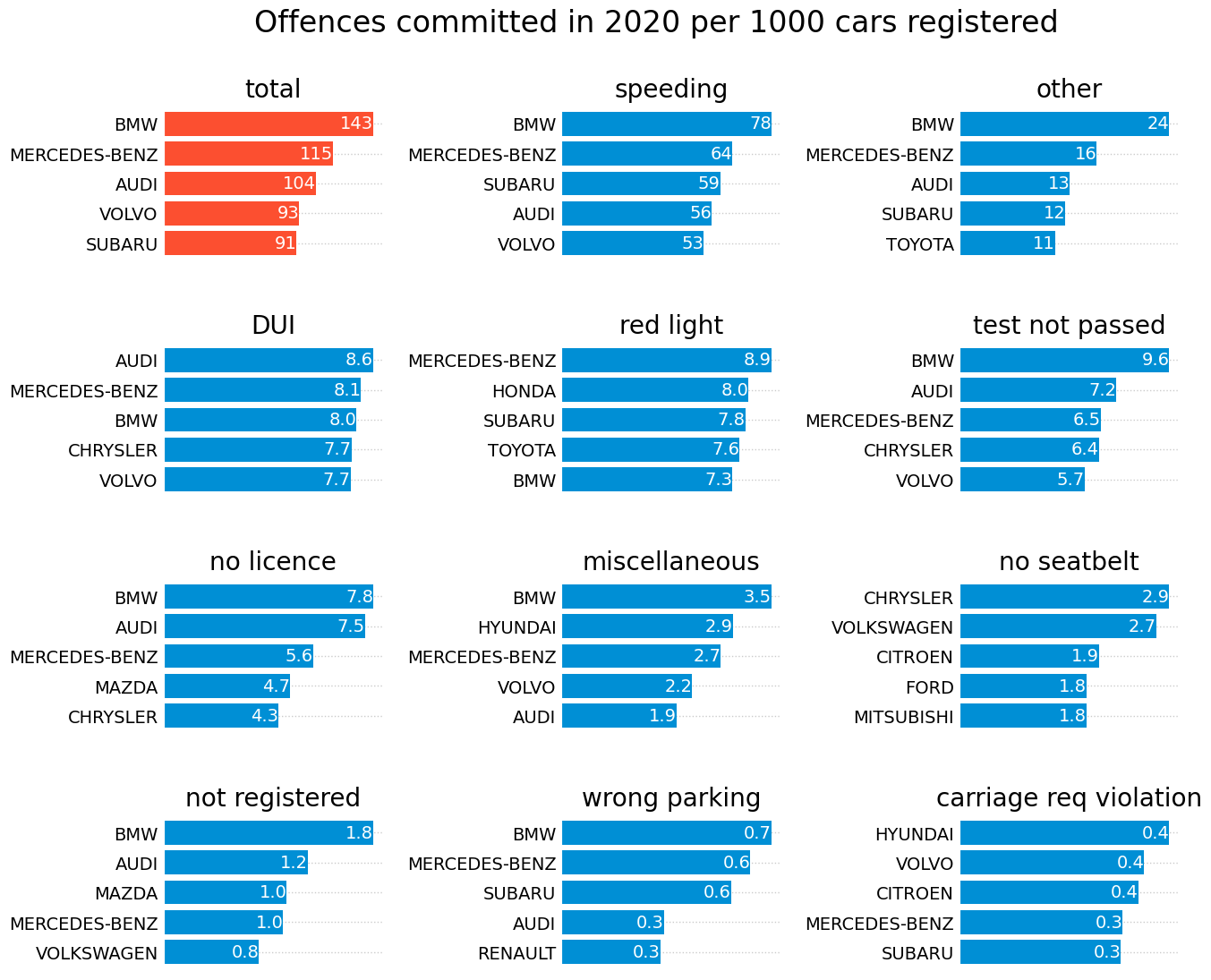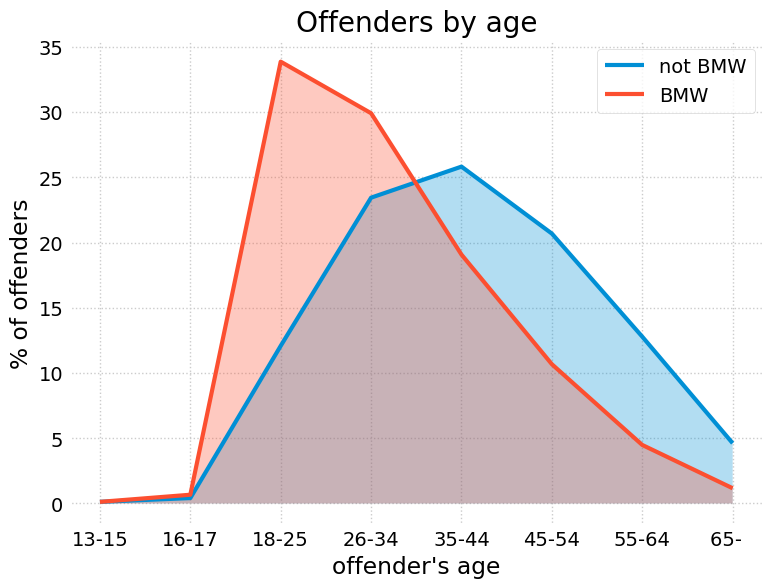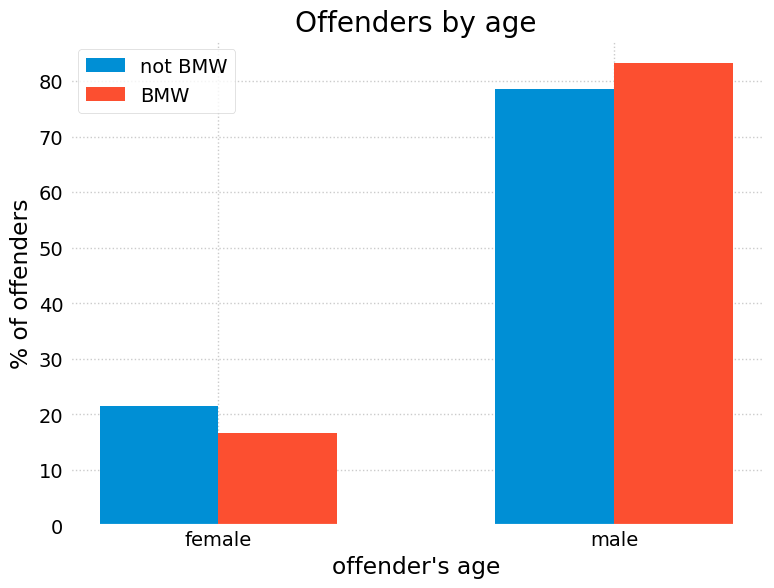
Are the stereotypes about BMW drivers true?
Here in Estonia (and probably in many other countries as well), there are certain stereotypes associated with BMW drivers. But are they actually true?
To test the stereotypes, I used the data on registered vehicles and traffic offences. Both are publicly available data sources:
- Statistics of registered vehicles by Estonian Transport Administration
- Offences detected during traffic supervision by Estonian Police and Border Guard Board
Based on these data available, I was able to form three specific hypothesis (stereotypes) to be tested:
- There are more traffic offences committed by BMW drivers than by other car brands.
- The BMW traffic offenders are proportionally younger (in their 20s) compared to other car brands.
- The BMW traffic offenders are more likely to be male.
Turns out the two first hypothesis are true.
Below is a chart that shows the number of offences committed in 2020 per 1000 registered cars. Overall, the BMW is a clear winner, with 146 offences per 1000 cars. BMW also leads in offence categories such as speeding, roadworthiness test not passed, the driver does not have the right to drive (no licence), the car has not been registered and more.

The BMW traffic offenders also tend to be younger than others. Running a chi-squared test produces statistically significant results (p-value 1.0322e-09).

The gender difference is not so great. It looks like BMW offenders tend to be more frequently male but this difference is not statistically significant (p-value 0.2440).
